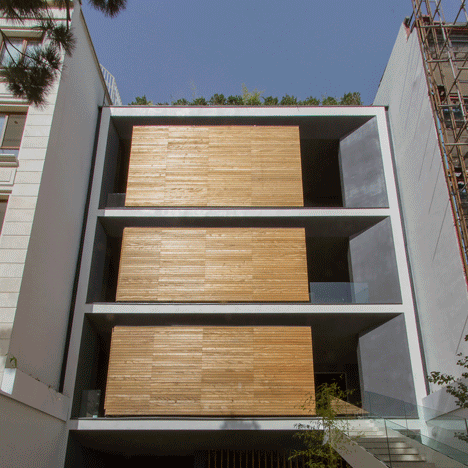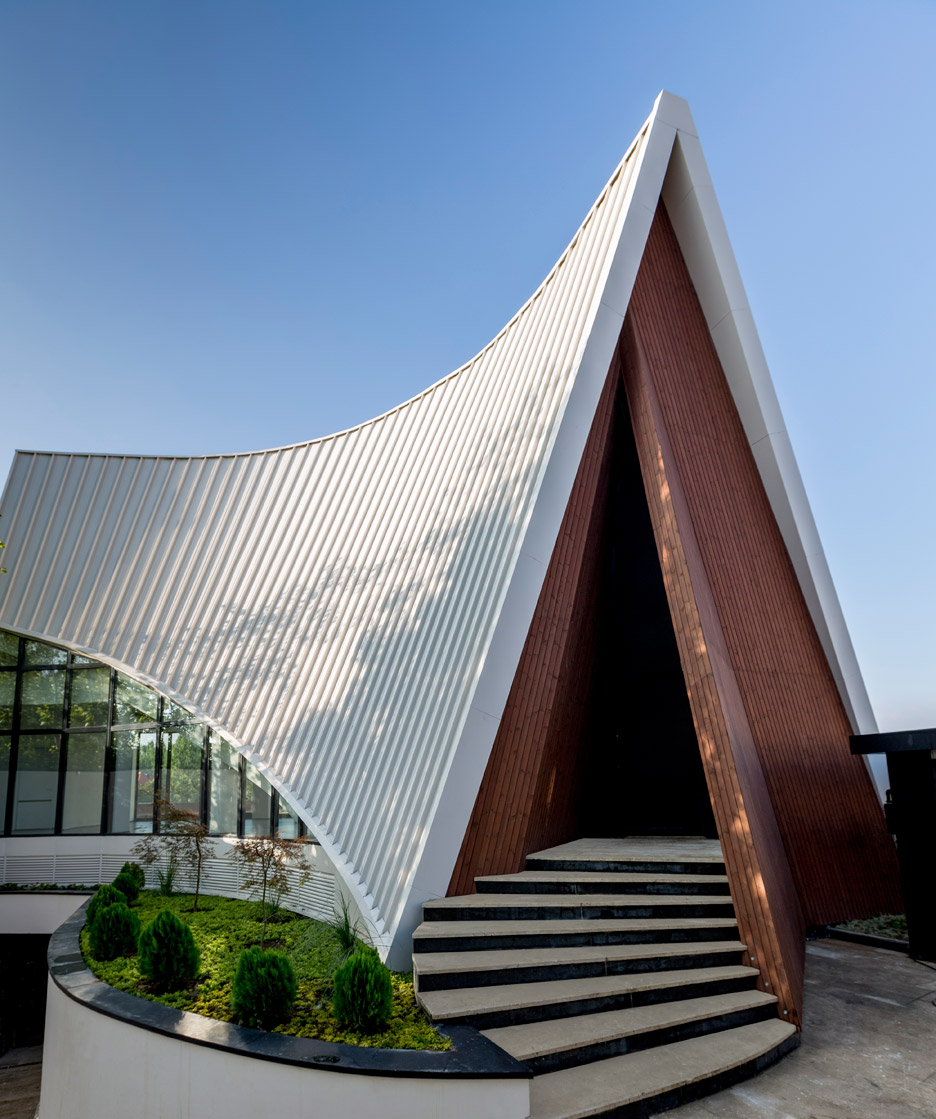The Royal Academy of Arts has named Iranian architect Alireza Taghaboni as the winner of the inaugural Dorfman Award, set up to celebrate talent that “represents the future of architecture”.
Taghaboni was selected by a jury including architects Richard Rogers and Louisa Hutton to win the £10,000 prize.
The architect, founder of Tehran-based Next Office, is lauded for building an impressive range of projects, including the shape-shifting Sharifi-ha House, the curvy Villa for Younger Brother and the sculpted Kouhsar Villa.
This in spite of the many challenges faced by Iranian architects, as a result of unstable politics and restrictive economic sanctions.
“We congratulate Alireza Taghaboni on his extraordinary achievement in realising buildings of high architectural quality in today’s turbulent context of Iran,” said jury chair Louisa Hutton, co-founder of Berlin studio Sauerbruch Hutton.

“Despite the political challenges, Alireza remains rooted to the local and social issuers of his country,” she continued. “These uncertainties, however, do not stop him experimenting with material, form and construction, working towards his own distinctive aesthetic.”
Alireza Taghaboni was selected ahead of four other shortlisted architects and studios: Japanese architect Go Hasegawa, Bahrain-based Anne Holtrop, Colombian studio Architectura Expandida, and Rahel Shawl, founder of Ethiopian studio RAAS Architects.
He received the award at an event at the Royal Academy yesterday, where he spoke out about his ambition to produce architecture that makes a difference.
“I am overjoyed to win the first Royal Academy Dorfman Award for Architecture,” he said. “I want my architecture to have a productive purpose in a country where the context is political.”
In an interview with Dezeen in 2016, Taghaboni said that a young and highly educated generation was emerging in Iran, which was leading to a building boom in the once-isolated nation.
“The young generation are working, they are penetrating the economy and business,” he said at the time. “They want modern, new things and a higher quality of life, so they design better projects.”

The Dorfman Award forms part of the Royal Academy’s newly expanded architecture programme, resulting from a seven-figure donation from the Dorfman Foundation.
The funding also encompassed another award – the inaugural Royal Academy Architecture Prize was given to Japanese architect Itsuko Hasegawa, in recognition of over 40 years of acclaimed architectural projects.
Architecture also now has a permanent home at the Royal Academy, in the recently renovated Burlington Gardens building by David Chipperfield Architects. The opening of this new wing marks the institution’s 250th anniversary.
“I am delighted to be the patron of these new international architecture awards and congratulate Alireza Taghaboni on becoming the inaugural winner,” said patron Lloyd Dorfman.
“We wanted to champion an exceptional emerging global talent in architecture. Architecture is important socially, culturally, economically and in so many other ways. This is an exciting part of the RA’s historic 250th anniversary.”
The post Alireza Taghaboni wins first Royal Academy Dorfman Award for promising architects appeared first on Dezeen.
